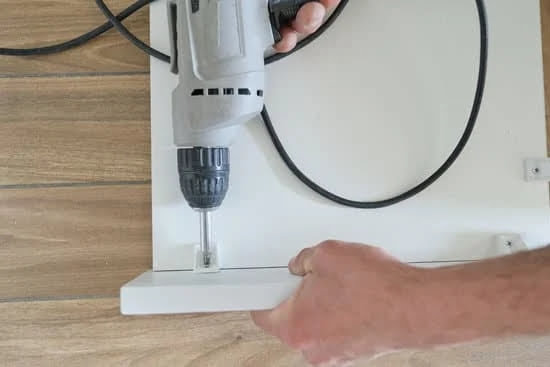What is original woodwork in a house mean? Original woodwork refers to the authentic and untouched wooden features and finishes that were present when a house was first built. It holds significant value in preserving the historical and architectural authenticity of a home, adding to its charm and character.
The original woodwork in a house serves as a window into its history, representing the craftsmanship and design aesthetics of the era in which it was constructed. From intricate moldings to hand-carved details, original woodwork reflects the artistry and attention to detail that went into building homes in the past.
In this article, we will explore the significance of original woodwork in a house, tracing its origins, discussing its different types, highlighting its benefits, providing tips on identifying it, as well as preserving and maintaining it. Additionally, we will delve into options for renovating or restoring original woodwork in order to maintain its timeless appeal for future generations. Join us as we uncover the importance and value of original woodwork in a house.
History of Original Woodwork
The history of original woodwork in homes dates back to ancient times, where wood was the primary material used for construction and decoration. From intricate carvings to ornate paneling, woodwork has been a staple feature of architectural design for centuries. In ancient civilizations such as Egypt and Rome, wood was highly valued for its durability and aesthetic appeal, leading to the incorporation of elaborate wooden details in palaces, temples, and homes of the wealthy.
Throughout the medieval period, original woodwork became more prevalent in European homes, especially during the Renaissance era. The use of intricate wooden moldings, coffered ceilings, and decorative trims became synonymous with opulence and grandeur. As craftsmanship evolved, skilled artisans and craftsmen created stunning woodwork pieces that adorned the interiors of castles, manors, and churches.
During the colonial era in America, original woodwork played a significant role in architectural styles such as Georgian, Federalist, and Colonial Revival. Hand-carved woodworking became a symbol of status and wealth among the affluent colonists, who used it to embellish their homes with intricate details like wainscoting, staircases, and fireplace mantels. Today, historic homes with original woodwork are cherished for their unique character and timeless beauty.
- Original woodwork reflects the craftsmanship and ingenuity of past eras
- Wooden moldings add elegance and charm to interior spaces
- Preservation of original woodwork contributes to the historical authenticity of a home
Types of Original Woodwork
When it comes to original woodwork in a house, there are various types that can be found, each adding a unique charm and character to the home. Here are some common types of original woodwork that are often present in houses:
- Trim and Molding: One of the most common types of original woodwork found in houses is trim and molding. This can include baseboards, crown molding, chair rails, and other decorative moldings that enhance the architectural appeal of the home.
- Built-in Cabinetry: Many older homes feature built-in cabinetry made from beautiful wood, such as oak or mahogany. These built-ins can include bookcases, cabinets, and shelving units that are seamlessly integrated into the design of the home.
- Doors and Windows: Original woodwork can also be seen in the doors and windows of a house. This may include solid wood doors with intricate carving or detailing, as well as wooden window frames and sills that add warmth and character to the interior.
Preserving these types of original woodwork is important for maintaining the historical integrity and value of a home. Many homeowners appreciate the craftsmanship and quality of original woodwork, making it a significant feature when considering purchasing or renovating a house. Additionally, original woodwork adds a sense of authenticity and history to a home that cannot be replicated with modern materials.
Benefits of Original Woodwork
Original woodwork in a house refers to the architectural elements and features made of wood that were originally installed when the house was built. This can include items such as doors, windows, trim, moldings, staircases, and built-in cabinetry. The significance of original woodwork in a house lies in its historical and aesthetic value. Preserving original woodwork can add character, charm, and authenticity to a home, while also contributing to its overall value.
One of the key benefits of preserving original woodwork in a home is the unique and timeless appeal it brings to the space. Original woodwork often showcases craftsmanship and attention to detail that may not be easily replicated with modern materials or techniques. Additionally, maintaining original woodwork can contribute to the historical integrity of a home, providing a link to its past and adding depth to its story.
Furthermore, original woodwork can enhance the overall ambiance and atmosphere of a house. Whether it’s intricate carvings on a banister or the warmth of aged wooden floors, preserving original woodwork can bring a sense of warmth and tradition to a home. It can also serve as a conversation piece for guests or potential buyers if the homeowners decide to sell in the future.
Preserving original woodwork not only adds aesthetic value but can also be environmentally friendly. Repurposing existing materials rather than replacing them with new ones reduces waste and contributes to sustainable living practices. By recognizing and appreciating the beauty of original woodwork in a house, homeowners are able to maintain an important piece of history while creating an inviting and distinctive living space.
| Benefits | Advantages |
|---|---|
| Unique appeal | Enhances historical integrity |
| Enhances ambiance | Contributes to sustainability |
How to Identify Original Woodwork
Original woodwork in a house carries a unique charm and character that cannot be replicated with modern materials. It adds warmth, elegance, and a sense of history to a home. However, with the rise of renovations and replicas, it can be challenging to identify whether the woodwork in a house is original or not. This section will provide valuable tips on how to distinguish original woodwork from replicas or renovations.
Examine the Details
One way to identify original woodwork in a house is by examining the details. Original woodwork often displays handcrafted details, such as intricate carvings, unique patterns, or subtle imperfections that are characteristic of artisanal craftsmanship. Look for signs of aging, wear and tear, and patina that only develop over time. These nuanced details are indicators of authenticity and can help differentiate original woodwork from replicas or renovations.
Research the History
Another effective method for identifying original woodwork is conducting research on the history of the house. Historical records, architectural plans, and photographs can provide valuable insight into the original features and design elements of the home. By understanding the historical context and timeline of the house, homeowners can determine whether the woodwork has been preserved in its authentic form or has undergone modifications.
Seek Professional Consultation
When in doubt, seeking professional consultation from experts in historic preservation or woodworking can be instrumental in identifying original woodwork in a house. Experienced professionals can conduct thorough inspections, analysis, and documentation to assess the authenticity of the woodwork. Their trained eye and knowledge of traditional craftsmanship can offer valuable guidance for homeowners who want to preserve and celebrate their original woodwork.
By following these tips on how to identify original woodwork from replicas or renovations, homeowners can uphold the integrity and heritage of their homes while appreciating the timeless beauty of original woodwork. Knowing how to distinguish authentic woodwork contributes to preserving its historical value and enhancing the overall aesthetic appeal of a house.
Preservation and Maintenance
Preserving the original woodwork in a house is not only important for maintaining the historical and architectural integrity of the property, but it also adds value and charm to the home. Original woodwork refers to elements such as trim, moldings, doors, staircases, and built-in cabinetry that were crafted from wood when the house was first constructed.
These features are often indicative of the time period and architectural style of the home, making them significant in understanding the history and character of the property.
To ensure that original woodwork in a house remains in good condition, regular maintenance is essential. This includes periodic cleaning with a mild soap or wood cleaner to remove dust, dirt, and grime that can accumulate over time. It’s important to avoid using harsh chemicals or abrasive materials that could damage the wood. Additionally, inspecting for signs of wear, cracks, or water damage is crucial so that any issues can be addressed promptly to prevent further deterioration.
Another key aspect of preserving original woodwork in a house is controlling the indoor environment. Fluctuations in humidity and temperature can cause wood to expand and contract, leading to damage such as warping or cracking. Using a humidifier or dehumidifier as needed can help maintain stable conditions within the home. Furthermore, protecting wood surfaces from direct sunlight can prevent fading and discoloration over time.
Cleaning With Mild Soap or Wood Cleaner
Regular Inspection for Wear and Damage
Control Indoor Environment (Humidity & Temperature)
By following these preservation and maintenance tips, homeowners can ensure that original woodwork in their house remains beautiful and structurally sound for years to come. Taking care of these unique features preserves the historical authenticity of the home while adding visual appeal and character.
Renovation and Restoration
Understanding the Importance of Preservation
Preserving original woodwork in a house holds significant value, not only in maintaining the historical integrity of the property but also in adding to its charm and character. Original woodwork reflects the craftsmanship and design aesthetics of a particular era, showcasing the skill and artistry of the time. As such, when contemplating renovation or restoration, it is crucial to understand the importance of preserving original woodwork and making informed decisions that honor its historical significance.
Renovation Considerations
When considering renovation options for original woodwork in a home, it is essential to weigh the pros and cons of each approach. Some homeowners may opt for partial renovation, addressing specific areas of damage or wear while maintaining the overall originality of the woodwork.
Others may choose to fully renovate certain elements but strive to retain as much original material as possible. It’s important to work with skilled professionals who have experience working with historic homes and understand how to balance preservation with necessary updates.
Restoration Techniques
Restoring original woodwork involves meticulous attention to detail and a commitment to authenticity. This process often requires specialized techniques such as stripping old paint or finishes, repairing or replacing damaged sections, and refinishing or replicating intricate details. With restoration, the goal is not simply to make the woodwork look new but rather to bring out its inherent beauty while maintaining its historical integrity. Careful research and expert craftsmanship are essential for successful restoration efforts that honor the original craftsmanship.
Overall, when it comes to renovating or restoring original woodwork in a home, it’s crucial for homeowners to consider not only their personal preferences but also the historical significance and value of these elements. By approaching renovations with sensitivity and understanding towards preserving original woodwork, homeowners can ensure that their homes reflect both their individual style and respect for historical craftsmanship.
Conclusion
In conclusion, the original woodwork in a house holds significant value and importance for several reasons. The history of original woodwork traces back to centuries ago, showcasing the craftsmanship and artistry of generations past. From intricate moldings to beautifully carved staircases, original woodwork adds character and charm to a home that cannot be replicated with modern materials.
Preserving original woodwork also offers numerous benefits, both aesthetically and financially. Homes with well-maintained original woodwork often hold higher property values and attract buyers seeking authentic craftsmanship and historical charm. Additionally, original woodwork contributes to the overall ambiance and atmosphere of a home, creating a sense of warmth and timelessness that is unmatched by contemporary renovations.
Identifying and preserving original woodwork requires careful attention and maintenance, but the effort is well worth it in order to maintain the authenticity and historical value of a home. Whether through restoration or renovation, maintaining original woodwork ensures that future generations can continue to appreciate the beauty and significance of these timeless architectural elements.
In essence, original woodwork in a house serves as a tangible link to the past, adding depth and character that cannot be replicated by modern design trends.
Frequently Asked Questions
Should I Paint My Original Woodwork?
Whether or not to paint original woodwork is a personal decision that depends on your aesthetic preferences and the condition of the wood. Some people prefer the natural beauty of wood, while others may want a different color or finish.
What Does Woodwork Include?
Woodwork typically includes any wooden elements in a house, such as baseboards, crown molding, window and door trim, wainscoting, and built-in cabinetry. It can also refer to structural elements like beams and columns.
Should I Paint Wood Trim in an Old House?
When deciding whether to paint wood trim in an old house, consider the historical significance of the trim and its condition. If the trim is damaged or already painted, it may be appropriate to repaint it. However, if the wood is in good condition and contributes to the historic character of the house, preserving its natural beauty may be preferred.

Hi everyone! I’m a woodworker and blogger, and this is my woodworking blog. In my blog, I share tips and tricks for woodworkers of all skill levels, as well as project ideas that you can try yourself.





